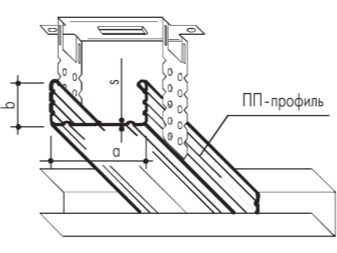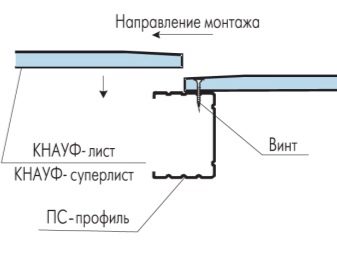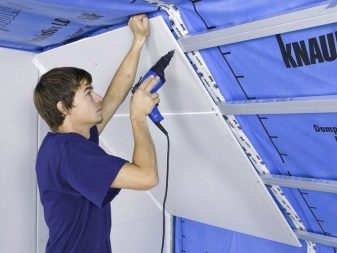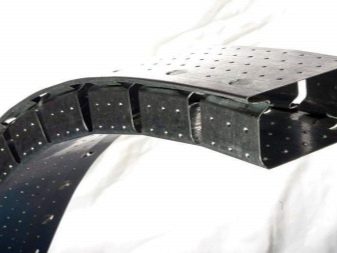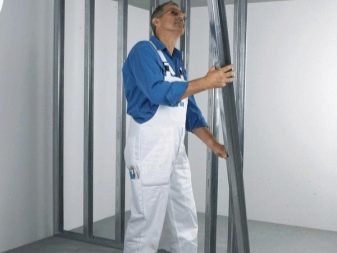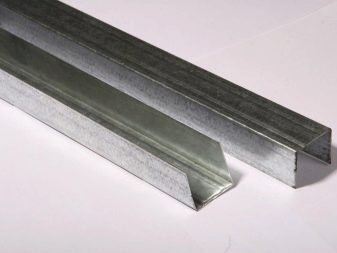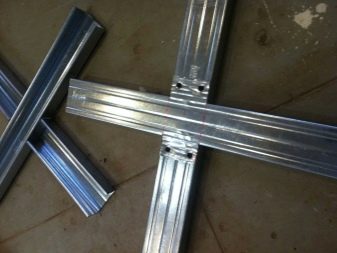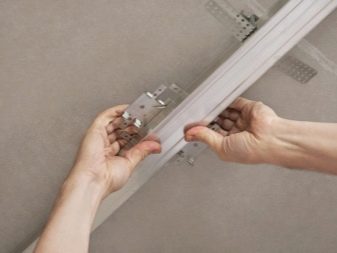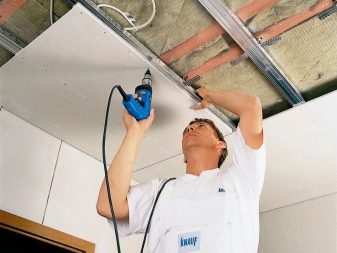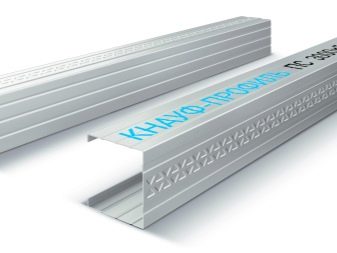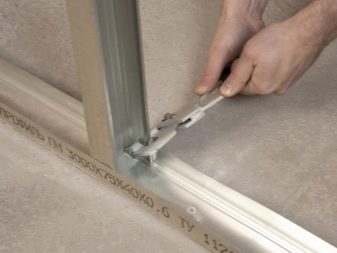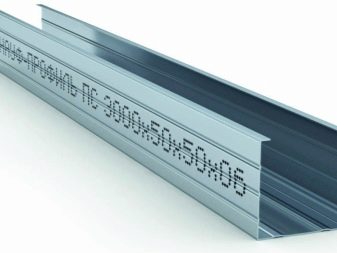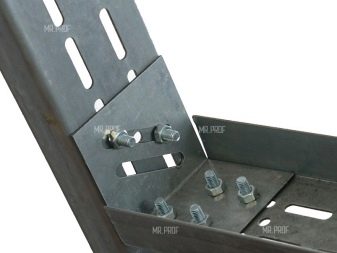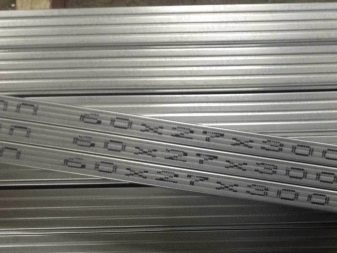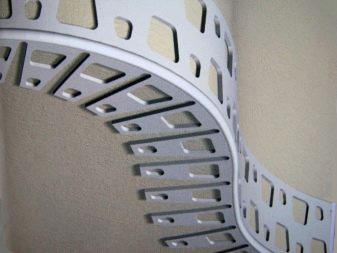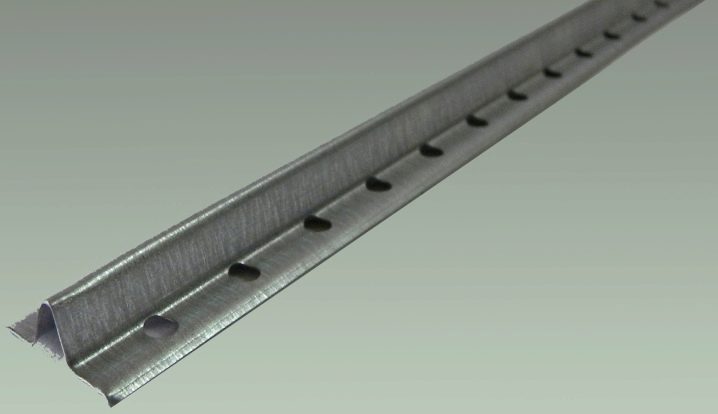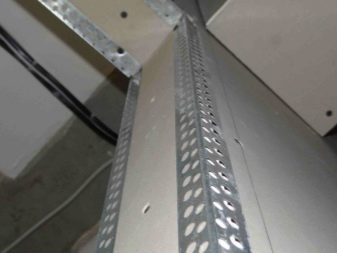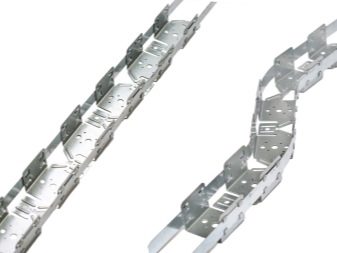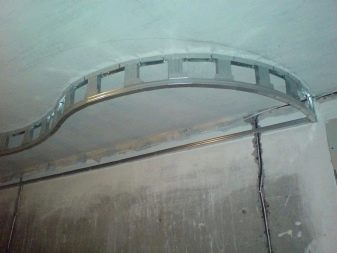Knauf Drywall Profiles: Types and Sizes
Sheeting plasterboard walls and ceilings is a popular method of finishing and leveling. In order for the facilities to serve for a long time, not collapsed and not covered with cracks, you should choose only high-quality consumables. The German company Knauf is engaged in the production of building and finishing products, where metal profiles are represented.
They are made of steel by cold rolling on special equipment.
Advantages of Knauf products
The company pays special attention to quality, uses metal with a thickness of 0.6 mm so that the element has sufficient rigidity. Compliance with the requirements of this parameter ensures the durability of fastening the gypsum board to the frame, as the screws are firmly held in the metal. All steel is galvanized,to prevent corrosion and increase service life.
Also distinctive features of the profile for Knauf drywall are:
- stiffening rib;
- openings for fasteners, wires and other communications;
- marking for ease of installation;
- special geometry that facilitates the connection of elements.
Depending on the design of the frame, its thickness and power in the manufacturer's catalog there are several types of profiles with different sizes. In order to build a wall or other structure, guides and rack-mount views will be required. The rails are attached to a solid base: walls, floor or ceiling of the premises being repaired. Rack-mounts with the help of grips are fastened to the created frame by self-tapping screws with a press washer or other fastener. Knauf manufactures certain types of products for the construction of suspended ceilings. These elements have a different wall shape for greater strength.
Profile types
Modern interior designs include not only multi-level ceilings of various shapes, but also walls with built-in shelves, cabinets, and notches of unusual shapes. The creation of plasterboard constructions with niches for LED strips is very popular.If straight lines are easy to create, then smooth, rounded, undulating is more difficult. For this, arch profiles and sine profiles are presented in the company's catalogs. With their help, you can easily translate into reality most of the ideas with a variety of outlines.
- Guides. Have marking of PN and P-shaped. With their help, they set the direction of the future frame. It is fixed around the perimeter of the structure or used to create jumpers between the racks. In the future, it fix the rack profile of the appropriate size. The wall width is standard 50, 75 and 100 mm, height - 40 mm. Profile length - 3 meters. Dimensions are selected in such a way that it was convenient to tighten the fasteners with any tool. The wide wall is reinforced with two longitudinal corrugations. To facilitate fastening to the supporting base, at the factory in the product make holes with a diameter of 8 mm for the dowels. In case they are not enough, the thickness of the steel allows you to make additional holes with a screwdriver or a drill.
Knauf manufactures separately guided ceiling profiles. They are used to create a suspended ceiling and fasten around the perimeter of the walls.
They produce profiles of three sizes: 50x40 mm, 65x40 mm, 27x28 mm. A cohesive product to it is a rack-mount ceiling profile of a suitable size.
- Rack-mount. Marking - PS. Usually installed to create vertical struts of the structure, attached to the guide profile. The plasterboard sheet is subsequently attached to it. Profile width - 50 (PS-2), 65 (PS-3), 75 (PS-4), 100 (PS-6) mm, wall height - 50 mm. Length - 3 m. The profile is C-shaped. The dimensions are chosen so that when two types of profiles are joined, no gaps and cracks are formed, they fit snugly together. The stiffening corrugations are located on the wide wall, there are three of them: in the center and two 10 mm to the edge from it. The central corrugation is used as a guide when fixing the skin, which facilitates the work.
Especially for utilities at the end of the profile there are holes with a diameter of 33 mm.
For the repair and creation of drywall constructions in large rooms, they produce a rack profile with a section of 50x50, 75x50, 100x50 mm, and a length of 4 m. Interroom partitions, wardrobes, wall cladding, etc. are made of it.
UA-profile - a type of rack profile, reinforced compared to the standard version.The manufacturer recommends this view to create a doorway. In combination with mounting angles, it is able to support the weight of the door up to 100 kg. The wall width is 50.75 and 100 mm, height is 40 and 50 mm. The width of the wall corresponds to the approximate weight of the door leaf, for example, a 50x50 profile will withstand a maximum weight of up to 50 kg inclusive. The length is 3000 and 4000 mm.
Profile MW - rack profile, contributing to increased sound insulation when creating partitions and cladding of plasterboard. It is made in such a way that its geometry increases the soundproofing ability of the whole structure. In the center of the profile there is a special longitudinal groove that can be used as a guide when assembling the frame.
- Ceiling. Marking - PP. With it, create a frame for ceilings with a suspended structure and wall cladding. It is produced in one size - 60x27 mm, has a length of 3 meters. It has high rigidity due to corrugations on all walls, three on each side. Profile wall is quite wide, which is very convenient when working with drywall on ceiling structures.
- Arched. Marking - PA. This type of profiles is designed to create multi-level ceilings with wavy lines, as well as assembling curvilinear structures: arches, domes and more.Knauf produces already curved profiles, they are distinguished depending on the bend radius: 500 or 1000 mm. Length - 3 and 6 meters.
- Mayachkovy (PM). Its width is 22 mm and height 6 mm. Designed for leveling walls with plaster solutions. Mounted on a wall in an upright position with a quick-drying solution applied to the wall. A beacon with a small effort is sunk into it. Next, you need to put the right amount of plaster on the wall and, putting a spatula or a rule to the profile, remove the excess solution. Aligning the walls in this way does not allow the solution to spread and allows it to be distributed evenly over the entire surface without sagging and waves. Beacon profiles Knauf made of galvanized metal, so they are used in wet areas. Special perforation provides reliable adhesion to various finishing materials. The height of the element allows you to align the differences of the walls to 5 mm. Subject to all the rules of work after complete drying of the finishing layer, the beacons remain hidden inside, without affecting the appearance of the wall.
- Corner (PU). It is used to protect the corners from any mechanical impact during operation.There are two types of angular profiles: corner and plaster. The first set after facing the walls of the gypsum board on the outer corners. The size of the element - 31x31 mm, made in the form of an acute angle of 85 degrees. Pre-corners are treated with putty. Having attached a profile to a corner, the structure gets into perforation in the form of circles with a diameter of 5 mm. Plaster profile is made of thinner steel and, as a rule, is used to protect the corners in openings, the ends of partitions, walls, arches. The section of the product is 35x35 mm and the length is 3 meters. The profile consists of a grid with cells of a diamond shape and a dense angle in the center.
- Profile - sine. The element is made with a special flexible edge of thin steel with a thickness of only 0.6 mm. Suitable for the construction of walls with curved structures. Used as a guide element on curved sections of the wall. U-shaped cross section, increases the rigidity. Length - 1900 mm. Shelf width - 50.75, 100 mm, height - 40 mm.
Creating a durable frame for a future design requires not only the correct choice of elements of the base, but also high-quality related products. Knauf catalogs contain all the necessary elements: connectors, suspensions, extension pieces for profiles, fasteners, construction tapes, waterproofing and other goods.
For information on how to install a plasterboard wall from Knauf, see the following video.



